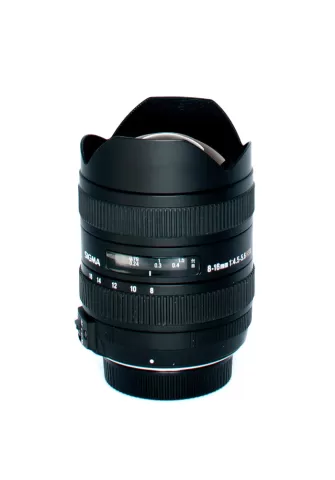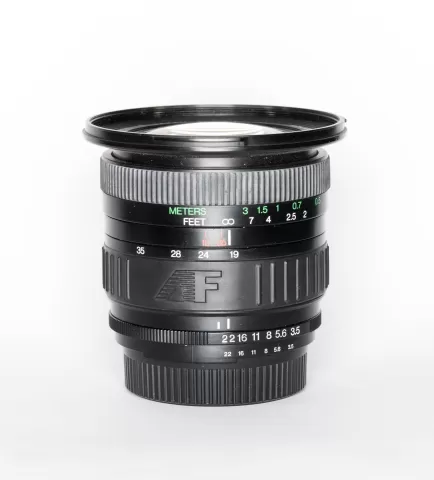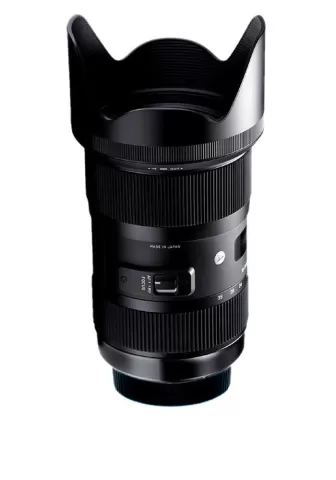The Sigma ultra wideangle zoom is a fantastic lens, but not easy to use and not perfect for all situations where a wideangle is useful
I bought a used Sigma AF 8-16mm f/4.5-5.6 DC HSM lens recently. I found it used in the local classifieds and even though I had some initial problems, the Danish Sigma distributor serviced it under the warranty, and now it works flawlessly.
I have been using it quite a lot lately, and I'm starting to get to know it and can now judge its performance.
I bought it as a replacement for my Sigma 10-20mm, which I have always used a lot, and have always used at 10mm predominantly. So my logic was that an 8-16mm would be even better, putting my sweet spot angle of view almost in the middle between something that was even wider and just a little wider than the 20mm setting that I rarely used on the 10-20.
And the Sigma certainly delivers on angle of view.
It's very wide. Very!
I can compare it to my fisheye lenses, which are 15 and 10.5mm respectively used on a full frame camera and a cropped sensor camera. The fisheyes are in nature extremely wide (180 degrees diagonal viewing angle), but have that very characteristic distortion, which is the hallmark of fisheyes. The Sigma is rectilinear, meaning that there are no (or almost no) bent lines.
But what the Sigma has in stead is a very pronounced wideangle look, meaning that due to the very wide angle of view you get a lot of “falling lines” if the camera is just the least bit off angle compared to the subject, and you get a very pronounced distortion of all elements in the corners and edges, most visible in circular items, which become very elliptical.
So if you shoot people holding the camera in eye height, their feet will be small and the persons in the edge of the image will have very strange head shapes. So when using the Sigma as an event lens, shooting tight scenes with people in them, you have to be very careful or accept the fact that some or all persons in the picture can look odd. In this respect the 8-16mm is actually much more critical than the 10-20mm. The 10-20 will distort things, but not nearly as extremely as the 8-16mm.
If you shoot images with buildings in them, you meet the same challenge: extreme perspective and odd shapes. The 8-16 is probably not an architect’s dream lens, while a real estate agent on the other hand will love it for its ability to render even the smallest chamber as a ballroom.
I have used the 8-16mm for landscapes and when the vistas are wide and the sky is high it really is a dream lens. It doesn't curl the horizon and it enables me to get a very good impression of the depth in the scene. Its distortions are much less dramatic when the shapes are soft and more random as they tend to be in nature, and the overall result is more pleasing to the eye.
It's a fairly large lens for it's range, but not extremely so. The very obvious, bulging front element is not huge, and the overall impression is a compact lens compared to some zooms and especially compared to Nikon's enormous 14-24mm.
The build is excellent and now when the zoom ring on mine has been fixed, the operation is smooth and pleasant, and focus is lightning fast and silent. The lens has a button to turn off AF, but also has AF override, so you can just grab and turn the focus ring whenever you want, even with AF engaged.
With regards to image quality my Sigma does OK, but is not impressing. The colors are really nice, but sharpness is not fantastic, and the edges aren't tack sharp even when I stop down the lens. Other sources report the lens as very sharp and even a new star in its range, but I'm still not really convinced by my specimen.
Stopping down does not necessarily help, and is also something you can only do when there's plenty light or you bump your ISO. The lens starts out at f/4.5 and will only offer f/5.6 at 16mm, so it's a pretty dark lens, which requires a bit of light to perform.
Since its depth of field is large even full open, you won't necessarily need to stop down for reasons of DOF or sharpness.
Prices in US$ (Sep. 2013)
Sigma 8-16mm f/4.5-5.6. List 700, street 650.-
Sigma 10-20mm f/3.5 (new). List 650.-
Sigma 10-20mm f/4.5-5.6 (old). List 480.-, street 425.-
Nikon 14-24mm f/2.8. List 2000.-
In spite of the exaggerated perspective and the immediate lack of sharpness in my copy, I still love this lens, and have already used it a lot. I'm learning to control it's odd rendering of the scene, and have used it extensively for landscapes already. Clouds and skies simply look fantastic when shot at 8mm.
And it's not an expensive lens, so it's a good supplement to use in situations where a very wide view is needed. Compared to Nikon's 14-24, it's a third of the price, but of course the 14-24mm is a brighter and also optically superior lens. The 8-16mm is the same price as the newest incarnation of the 10-20mm, also from Sigma.
And speaking of: If you want a hassle free and very easy to use wideangle zoom, the Sigma 10-20mm is probably your best bet. If you go for the old version (f/4.5-5.6), that lens is even a couple of hundred dollars less than the 8-16, which makes it a really good deal in my eyes. The latest 10-20mm (f/3.5) is the exact same street price as the 8-16mm. For really extreme wideangle on DX bordering on fisheye, but not being it, I cannot see any alternatives to Sigma's 8-16mm.














